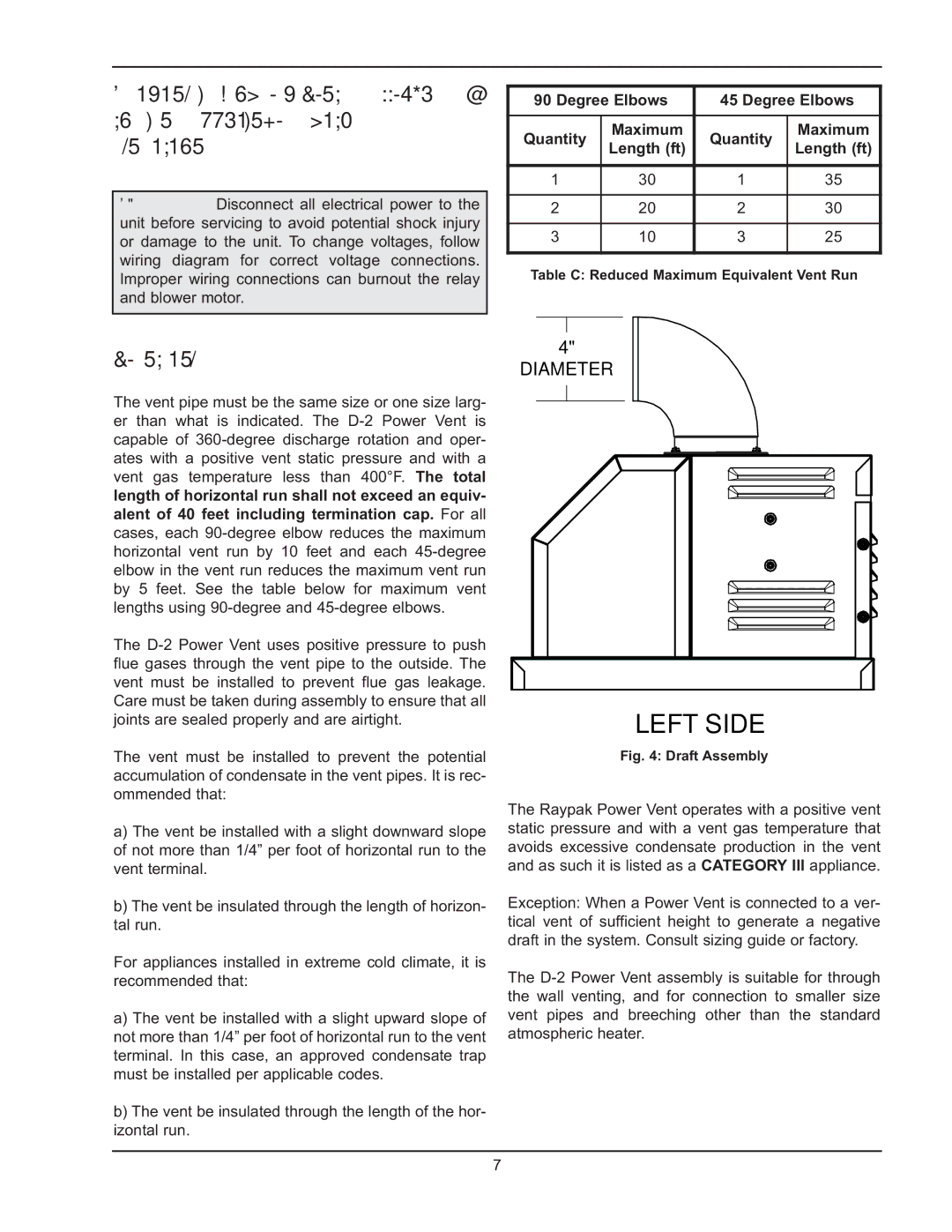330/331, 400/401, 181/182, 260/261 specifications
Raypak is a leading manufacturer in the pool and spa heating industry, known for its innovative and tech-savvy products. Among its offerings, the Raypak 260/261, 181/182, 400/401, and 330/331 series of heaters stand out due to their advanced features and characteristics.The Raypak 260/261 series is designed specifically for residential and commercial pools. One of its main features is its digital control system, which ensures precise temperature settings and improved energy efficiency. With a maximum output of 260,000 BTUs, this series is perfect for heating larger pools, providing quick warm-up times and consistent heat levels, making swimming enjoyable even in cooler months. The 260/261 series also incorporates a unique low NOx design for environmentally friendly operation, adhering to strict emissions standards.
Next in line, the Raypak 181/182 series is known for its compactness and efficiency. With an output of 180,000 BTUs, this heater is perfect for smaller residential pools and spas. It features a bronze header design which resists corrosion, enhancing its longevity. Additionally, the direct spark ignition system contributes to reliability and ease of use, ensuring a quick startup without the need for a pilot light.
The Raypak 400/401 series caters to high-demand scenarios where quick heating is crucial. With an impressive heating capacity of up to 400,000 BTUs, it is designed for commercial applications, such as hotels and water parks, as well as large residential installations. This series is equipped with advanced digital control technologies, allowing for easy monitoring and adjustment of settings. The built-in stainless steel burner, combined with a robust heat exchanger design, enables efficient thermal performance and extended service life.
Lastly, the Raypak 330/331 series provides a well-balanced option for those seeking power and efficiency. With heating outputs of 330,000 BTUs, this series combines the latest in heat exchanger technology with a user-friendly interface. It also features Raypak’s signature low NOx emissions technology, making it suitable for compliance with regional air quality regulations.
In summary, Raypak's various heater series, including the 260/261, 181/182, 400/401, and 330/331, offer a diverse selection of features tailored for different heating needs. With a strong emphasis on performance, efficiency, and environmental responsibility, Raypak continues to be a dominant player in the pool and spa heating industry.

